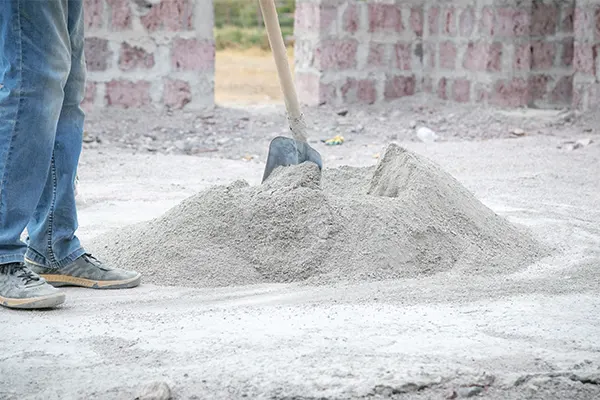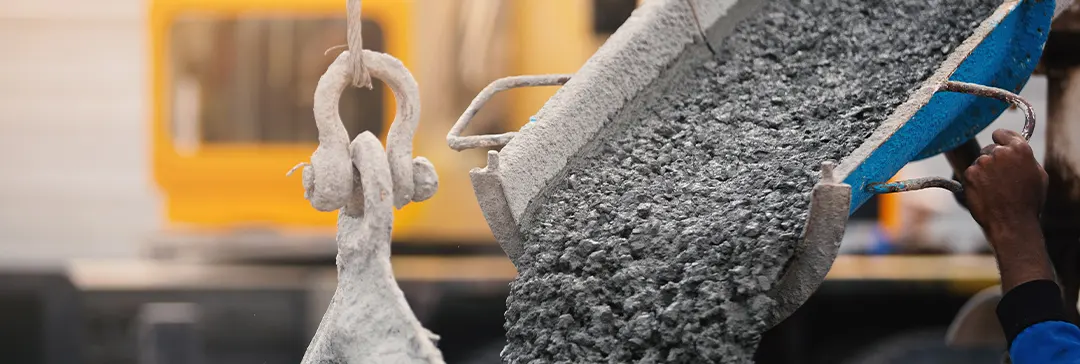Concrete is the essential material for any construction because of its durability, strength and versatility. Concrete is used in floors, walls, roofs, and foundations for homes. Due to its special qualities, it can support large structures and transfer loads. Cement, water, and aggregates are mixed to create concrete. The ratios of concrete mixes used in various construction projects vary. So, for your basic understanding, Brick & Bolt brings all the basics about the concrete mix design, the required materials, and the amount of cement needed for a 1 cubic meter M20 concrete mix.
What is Concrete Mix Design?
The concrete mix design is the process of making concrete with the right proportioning of ingredients to achieve the required strength and durability. Since every ingredient has unique properties, creating a good, affordable concrete mix is quite challenging. An engineer or other construction expert can design the concrete mix per the specifications and needs of the proposed structure.
You can make appropriate and optimally formulated concrete using the proper mix design that can increase the properties of the structure and ensure its stability and strength. There are two types of concrete mix designs: nominal mix and design mix.
The design mix is used when building special structures or structures with higher strength requirements, on the other hand. In contrast, the nominal mix is essentially applied to the concrete preparation for normal structures. Let’s understand this terminology in detail.
1. Nominal Concrete Mix
The nominal mix concrete has a lower strength as compared to the design mix concrete. Hence, it is used for small-scale, insignificant projects. In nominal mix, the concrete, cement, sand, and aggregates ratio is fixed to achieve a specific strength. For example, for M20 grade concrete, M indicates mix design and 20 indicates the standard strength of concrete- 20 N/mm2 in nominal circumstances. The M20 Concrete Ratio is fixed at 1:1.5:3, which means 1 part of cement, 1.5 parts of sand or fine aggregate, and 3 parts of coarse aggregates. The lower-grade concrete means below M20, such as M15, M10, M5, etc., is prepared this way; higher-grade concrete means above M20, like M30, M50, M80, etc., must be prepared using a designed concrete mix method.
2. Designed Concrete Mix
The purpose of the design mix is to give concrete the necessary strength. Proportions like nominal mix concrete are not derived for the design mix. As a result, you can obtain the required characteristics in both the fresh and hardened stages of concrete. You can modify the properties of fresh concrete, such as workability and setting time, and hardened concrete, such as compressive strength and durability. To enhance the qualities of the mixture, additives such as admixtures, retarders, etc., are added in addition to the basic ingredients.
Materials Required for Concrete Mix Design?

1. Cement
Concrete gets its strength from the binding substance called cement. Portland cement is one of the common varieties and is used extensively in buildings. You can also use the different types of cement for Construction as per your project requirements.
2. Fine Aggregates or Sand
Sand or fine aggregate is used to fill in the spaces left by coarse aggregates and give workability to the concrete mix.
3. Coarse Aggregates (Gravel or Crushed Stone)
Coarse aggregates come in different sizes; they give strength to concrete and reduce the quantity of cement required.
4. Water
Water is crucial for activities like the hydration of cement and the setting and hardening of concrete. The strength and durability of the concrete are largely dependent on the water-to-cement ratio.
5. Admixtures
The admixtures are used to modify the properties of concrete in its hardened or fresh stage. Admixtures like retarders, accelerators, water reducers or plasticisers, super plasticisers, etc., are the most common types of admixtures used in the mix design.
M20 Concrete ratio: Cement Needed for 1 Cubic Meter
As mentioned above, for an M20 grade of concrete, the proportion is 1:1.5:3
Now, to calculate cement for the M20 concrete mix. Let’s assume you need a M20 grade concrete for 1 cubic meter,
So, the Wet Volume of Concrete is 1 cubic meter.
If you want to calculate the dry volume of concrete, then you need a factor of safety to prevent shrinkage, and that factor of safety is 1.54.
Hence, Dry Volume of Concrete= 1.54 x Wet Volume of Concrete
= 1.54 x 1 cubic meter
= 1.54 cubic meter
Total of ratio is 1 + 1.5 + 3 =5.5
Hence, the Volume of Cement is,
= (Cement Ratio/ Total Ratio) x Dry Volume of Concrete
= (1/5.5) x 1.54
= 0.28 cubic meter
Now, the cement quantity for M20 concrete mix is, or you can say the No. of Cement Bags is,
= Volume of Cement x (Density of Cement/Weight of Cement per Bag)
=0.28 x (1440/50)
= 0.28 x 28.8
= 8.064 Bags
So, round up 8 bags of cement you require for the M20 grade of concrete.
Conclusion
In conclusion, the strength and durability of concrete make it an essential building material. For a given strength and durability, the concrete mix design process requires exact ratios of cement, water, and aggregates. The essential components of a concrete mix design are cement, aggregates, water, and admixtures to achieve the desired properties. To ensure structural integrity, your contractor or engineer must have a solid understanding of concrete mix design. Hence, it’s important to be careful when calculating the amount of cement needed for a 1 cubic meter M20 concrete mix.
FAQs
What is the dry volume of M20 concrete?
To calculate the dry volume of M20 concrete, multiply the wet volume by 1.54. So, if you have 1 cubic meter of wet concrete, the dry volume would be 1.54 cubic meters. This accounts for the space occupied by air voids and other factors.
How much cement is needed for M20 concrete?
For M20 grade concrete, the mix ratio is 1:1.5:3 (cement: sand: aggregates). To make 1 cubic meter of M20 concrete, you need approximately 8 bags of cement, with each bag weighing 50 kg. This equates to about 400 kg of cement.
What is the minimum grade of concrete for M20?
M20 itself is a specific grade of concrete. It is the lowest grade of concrete for structural use. It ensures enough strength and durability. The “M” stands for mix, and “20” indicates that the concrete has a compressive strength of 20 N/mm² after 28 days of curing.

